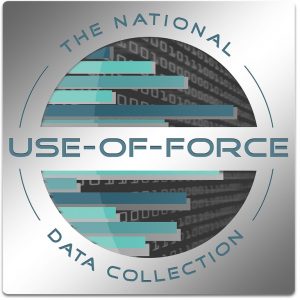
This year, 2020, marks the 90th anniversary of the FBI’s Uniform Crime Reporting (UCR) Program. Since the early 20th century, the FBI has been responding to societal challenges and crime trends by providing more accurate and reliable U.S. crime data to benefit civic leaders, law enforcement agencies, and the general public. Law enforcement agencies across the United States contribute crime data voluntarily to the UCR Program, creating a nationwide program of comprehensive crime statistics.
Summary Reporting System

In 1871, in St. Louis, Missouri, the National Police Association enacted a resolution “to procure and digest statistics for the use of police departments.” Unfortunately, for the next 58 years, while some other nations adopted methods of collecting crime statistics, the United States did not.1
But that would change in the 20th century. During the 1920s, U.S. society experienced radical developments. The Roaring Twenties brought voting rights for women, the rapid growth of mass popular entertainment, and the advent of the U.S. automotive industry. The decade also brought a constitutional amendment prohibiting the manufacture or sale of alcohol, creating a vast black market that enabled crime bosses like Al Capone to become tremendously wealthy and powerful. Serious crimes like bank robbery, kidnapping, and drug trafficking also became more prevalent and visible.
The International Association of Chiefs of Police (IACP) responded to the challenges of this era by conceiving a systematic approach to gathering U.S. crime data. Using a grant, the IACP formed the Committee on Uniform Crime Records in 1927. The IACP formed an advisory group that included J. Edgar Hoover, and technical staff worked to develop the details for a nationwide crime statistics program.
In 1929, the IACP developed and adopted a system to classify and report crimes. The FBI had already been making efforts to centralize criminal identification records from across the United States, and the IACP suggested that the FBI should administer the new crime reporting system, too. As the U.S. Congress deliberated the issue, the IACP published the guidelines for nationwide crime reporting. Only two months later, the IACP published the first Uniform Crime Reports bulletin in January 1930. The bulletin included reported crimes from 400 cities and 43 states. On June 11, 1930, Congress authorized the FBI to collect, compile, and distribute crime records. This data collection program was called the Summary Reporting System (SRS). Under SRS, the FBI gathered statistics on murder, rape, robbery, aggravated assault, burglary, larceny-theft, and auto theft. Because of the practical need for simplicity, SRS aggregated (i.e., totaled without including subtotals) the figures and counted offenses according to a “hierarchy rule” that counted only the one most serious offense per incident.2
Participation in SRS increased to 1, 400 agencies by 1934 and to 5,700 agencies by 1956.3 In 2018, the number of agencies participating in SRS was 16,659.4 Each year and semiannually, the FBI has published SRS statistics in Crime in the United States with online publications dating from the 1995 reporting year.5 Over the decades, the FBI has enhanced SRS by adding more features such as arson statistics and additional details about homicides.6
Although SRS has served the United States well for decades as the primary source of crime statistics, it has inherent limitations due to the simplicity of its original design. Therefore, the FBI will retire SRS after this year and collect crime statistics only through the more modern National Incident-Based Reporting System (NIBRS). However, the FBI will continue to convert NIBRS data into SRS format for publication purposes for several more years to maintain trend data and give researchers and the law enforcement community time to complete their transitions to using NIBRS. The FBI will also publish SRS data quarterly rather than semiannually.
Law Enforcement Officers Killed and Assaulted

In the 1930s, U.S. society experienced tremendous economic and ecological hardships, contributing to a change of perspectives toward law enforcement and the safety of police officers. The Great Depression caused countless businesses to fail, resulting in the unemployment of over one-fourth of all workers. During the same time period, the Dust Bowl, the worst drought in U.S. history, caused destructive dust storms across the Midwest. The 1930s was also the decade during which high-profile criminals like the violent police-ambushing robbers Bonnie Parker and Clyde Barrow and serial bank robbers John Dillinger, Charles “Pretty Boy” Floyd, and Lester “Baby Face Nelson” Gillis gained notoriety. Popular culture and news media coverage dramatized incidents in which such notorious criminals killed police officers, but the United States did not yet have statistics to determine how common it was for a police officer to be feloniously killed.
Starting in 1937, the FBI began compiling statistics on incidents of the felonious killing of law enforcement officers. In the 1938 edition of Uniform Crime Reports for the United States and Its Possessions, the FBI first published statistics on police officers killed by criminals, reporting that criminals killed 40 police officers in 1937.7
In 1960, the FBI upgraded its reporting to include assaults on police officers. That year, Crime in the United States reported 48 police officers killed and more than 9,000 assaulted.8 The FBI continued to publish this information in Crime in the United States until 1973, when the FBI first published it in the Law Enforcement Officers Killed Summary. That year, the FBI reported 112 officers feloniously killed. The volume also included details about incidents in which officers were killed, such as the geographic region where the murder occurred, type of officer activity, type of weapon used, and time of day.9 The 1973 publication of the Law Enforcement Officers Killed Summary became the basis of what is now called the Law Enforcement Officers Killed and Assaulted (LEOKA) program. The FBI continues to publish LEOKA statistics each year, and law enforcement agencies and researchers use the data for training and study.
National Incident-Based Reporting System

During the time from the development of LEOKA to the 1980s, the United States was involved in World War II, the Korean War, the Vietnam War, and a decades-long Cold War with the Soviet Union. These were also the decades of the hippie counterculture, the Civil Rights Movement, and the Space Race. While the decades from the 1930s to the 1980s were turbulent ones for governments and society, they were also the decades when computers first made information more readily available than people could have previously imagined.
In 1985, to bring crime statistics into the electronic era, the FBI and the Bureau of Justice Statistics (BJS) collaborated on a report called Blueprint for the Future of the Uniform Crime Reporting Program. In this report, the FBI and BJS called for the development of a more modern crime statistics reporting system that would gather more data than SRS and capitalize on advances in data technology.10
This more modern system is NIBRS, which is vastly superior to SRS. NIBRS collects incident-based data on 52 categories of offenses and arrest data on 10 categories of offenses. The data contained in NIBRS show up to 10 crimes committed in a single incident, as well as victim and offender information, the type of weapons used, the location of the crime, the time that the incident occurred, and more. With no hierarchy rule to eliminate counts of multiple offenses in an incident, NIBRS captures a more complete overall number of crimes.11
In 1991, the FBI began collecting crime data for NIBRS. For the following 20 years, the FBI made NIBRS data available by request on data files but did not publish it except in a few special reports. The FBI began annual online publication of NIBRS data in 2011, and when the FBI retires SRS on January 1, 2021, NIBRS will be the main U.S. crime statistics system.
Hate Crime Statistics

The United States has an unfortunate history of hate crime; but for a long time, there was not a systematic approach to measuring and reporting hate crimes. That changed on April 23, 1990, when the U.S. Congress passed the Hate Crime Statistics Act, requiring the U.S. attorney general to gather data about crimes motivated by bias against race, religion, sexual orientation, or ethnicity. The attorney general directed the FBI to develop the new system for hate crime statistics, which was implemented as part of the UCR Program.
In 1994, the FBI published the first volume of U.S. statistics on hate crime in Hate Crime Statistics, 1992. For that year, the FBI compiled data from 7,466 bias-motivated criminal incidents reported by approximately 6,200 law enforcement agencies in 41 states and the District of Columbia.12
The FBI continues to publish this data online in the annual Hate Crime Statistics report. In the 2018 publication, the FBI published data on 7,120 hate crime incidents reported by 16,039 law enforcement agencies. Over the years, the FBI has expanded Hate Crime Statistics to include data about crimes involving bias against disability, gender, and gender identity. The data collection also includes statistics about incident-related factors like location types and victim and offender characteristics.13
National Use-of-Force Data Collection

In 2014, the case of a Ferguson, Missouri, police officer shooting an unarmed subject caused controversy across the United States. The incident became part of an ongoing media narrative about police use of deadly force, and the Ferguson incident and several other high-profile situations prompted civil protests and political discussions.
One of the main causes of society’s difficulty with the issue was the lack of empirical data. In 2015, the FBI’s Criminal Justice Information Services Advisory Policy Board, with participation from major law enforcement organizations, proposed the development of a new data collection to gather statistics about police use of force in the United States. In 2017, a task force of law enforcement leaders deliberated the scope, definitions, and data elements of such a system.
The new system became the National Use-of-Force Data Collection. Under the scope of the collection, the FBI gathers data on incidents of law enforcement use of force that result in death or serious bodily injury or when a law enforcement officer discharges a firearm at or in the direction of a person. The data collection gathers incident-related details such as location types, reasons for contact with subjects, and weapons involved. To ensure that data are current and complete from all participating agencies, the FBI also collects “Zero Reports,” in which agencies certify that they have had no incidents of use of force during the applicable time period. To test the new data collection, the FBI conducted a pilot study with volunteer agencies, and on January 1, 2019, the FBI launched the live data collection for agencies across the United States to use.
The FBI has so far gained participation from over 40 percent of U.S. law enforcement agencies; and starting in 2020, the FBI publishes data on agency participation. When participation in the National Use-of-Force Data Collection reaches 60 percent of U.S. law enforcement agencies, the FBI plans to publish incident-level data. To achieve these levels of participation, the FBI urges all law enforcement agencies to contribute. Even small agencies with only a few officers should participate. In addition, various types of agencies other than police departments, such as port authorities or universities with sworn law enforcement officers, should participate to make the data collection nationally representative.
Crime Data Explorer

At about the same time the FBI was developing the National Use-of-Force Data Collection, the FBI also set the goal of modernizing crime data. This included the planned retirement of SRS and an increased push to include agencies in NIBRS. To make the enhanced data more available and interactive, the FBI developed the Crime Data Explorer (CDE).14
Traditional UCR publications were limited in their utility because they were not interactive or timely. When the FBI began to publish SRS data online in 1996 (publishing data from 1995), it was merely an online version of the static data that had previously been published in paper volumes since 1930. Even when the FBI started publishing the more detailed NIBRS data online in 2011, the FBI was limited to posting data tables based on the most common topics typically of interest to the public. The FBI could not feasibly publish data tables based on every possible combination of data elements in NIBRS—that would require the publication of a virtually incalculable number of tables.
For example, the FBI publishes a NIBRS data table that shows victim ages by offense category.15 If the FBI wanted to publish data on every combination of victim age and offense category by location type, it would need to publish 46 additional data tables. If the FBI tried to publish data on every combination of victim age, offense category, and location type by 22 categories of weapons or force, it would need to publish 1,012 more tables. NIBRS can answer many combinations of questions about crime with its incident-based dataset, but publication of that data would require the FBI to post a virtually incalculable number of static tables. Obviously, the static table format cannot fully capitalize on the sheer power and versatility of the NIBRS dataset.
Another limitation when publishing static tables is the large time delay between when a crime incident occurs and when it is reflected in the UCR publication. The FBI publishes annual crime statistics in the autumn of each year, reflecting crime statistics from the previous year. If a crime incident occurs in January of one year, the published crime statistics may not reflect that incident until the fall of the next year—about 21 months after the crime happened.
The FBI designed CDE to correct the weaknesses in the traditional publication format and launched it in June 2017. CDE is an online, interactive tool that provides UCR data in a more timely manner, thus making the information more useful for law enforcement agencies, researchers, journalists, and the general public. It can be accessed by anyone on the FBI’s UCR webpage and has a number of beneficial features.16 CDE allows users to
- access NIBRS, SRS, LEOKA, and police employment data;
- sort data on a national, state, or departmental level;
- download whole UCR datasets or specified tables;
- filter data by time periods going back to 1985;
- select specific offense categories;
- automatically generate data visualizations; and
- seamlessly integrate updated data from past years.
The FBI continues to develop CDE and intends for it to be the main portal to access U.S. crime data. In the future, the FBI plans for CDE to
- include all UCR data collections like the National Use-of-Force Data Collection;
- feature data stories that show how users can understand and apply data;
- be sortable by more data elements, making it more versatile for different users;
- have quarterly updates; and
- contain data from federal agencies.
Beyond 90 years
Over the last 90 years, as historical trends and events have presented new challenges and opportunities, the FBI has expanded and refined the UCR Program to keep it modern and relevant. The UCR Program continues to evolve to serve law enforcement and meet society’s needs for reliable crime data. In partnership with law enforcement agencies and organizations, the FBI will ensure that UCR will continue to serve U.S. law enforcement agencies and communities.
Notes:
1 Committee on Uniform Crime Records, Uniform Crime Reporting (New York, NY: International Association of Chiefs of Police, 1929), 1.
2 FBI, Uniform Crime Reports for the United States and Its Possessions: Volume I—Number 1: Monthly Bulletin for August 1930 (Washington, DC: United States Government Printing Office, 1930), 1–6.
3 FBI, “A Byte Out of History: Taking the Pulse of Crime…76 Years and Counting,” FBI Stories, June 7, 2006.
4 FBI, “2018 Crime in the United States: FBI Releases 2018 Crime Statistics,” news release, September 30, 2019.
5 FBI, Crime in the United States, 1995 (Washington, DC: U.S. Department of Justice, 1996).
6 FBI, “Offenses Known to Law Enforcement,” Crime in the United States, 2018 (Washington, DC: U.S. Department of Justice, 2019).
7 FBI, Uniform Crime Reports for the United States and Its Possessions, vol. 9, no. 3 (Washington, DC: United States Government Printing Office, 1938), 113.
8 FBI, Crime in the United States: Uniform Crime Reports—1960 (Washington DC: United States Government Printing Office, 1961), 1.
9 FBI, Law Enforcement Officers Killed Summary (Washington, DC: United States Government Printing Office, 1973), 1–11.
10 Eugene C. Poggio et al., Blueprint for the Future of the Uniform Crime Reporting Program: Final Report of the UCR Study (Washington, DC: U.S. Department of Justice, Bureau of Justice Statistics and Federal Bureau of Investigation, 1985), 21–22.
11 FBI, “National Incident-Based Reporting System (NIBRS).”
12 FBI, Hate Crime Statistics, 1992 (Washington, DC: United States Government Printing Office, 1994), 7.
13 FBI, “Incidents and Offenses,” 2018 Hate Crime Statistics (Washington, DC: U.S. Department of Justice 2019).
14 FBI, Crime Data Explorer.
15 FBI, 2018 National Incident-Based Reporting System (Washington DC: U.S. Department of Justice, 2019), “Victims, Age by Offense Category, 2018,” table.
16 FBI, “Uniform Crime Reporting (UCR) Program.”
Please cite as
Jeffrey Fisher, “90 Years of UCR,” Police Chief Online, October 7, 2020.



